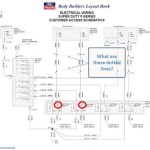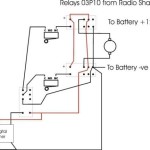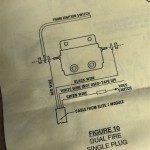Wiring Harness Replacement, a critical automotive maintenance procedure, involves replacing an aging or damaged wiring harnessa bundled assembly of electrical wires that connects various electrical components within a vehicle. This replacement ensures proper electrical functionality, preventing malfunctions and potential safety hazards.
Aging or exposure to harsh conditions can cause wiring harnesses to deteriorate, leading to frayed or broken wires. Wiring Harness Replacement addresses these issues, restoring electrical integrity and preventing potential electrical failures, engine problems, or even fires. Its benefits include improved vehicle performance, increased safety, and reduced risk of electrical issues.
A key historical development in Wiring Harness Replacement was the introduction of modular wiring harnesses, which simplified the process by allowing for quick and easy replacement of individual sections. This innovation greatly reduced repair times and costs. Moving forward, this article will delve into the intricacies of Wiring Harness Replacement, exploring its components, techniques, and troubleshooting methods to provide a comprehensive understanding of this essential maintenance task.
Wiring Harness Replacement encompasses a multifaceted set of essential aspects that directly impact the safety, performance, and longevity of a vehicle’s electrical system. Understanding these aspects is crucial for proper diagnosis, repair, and maintenance.
- Materials and Construction: Wiring harnesses are typically constructed using high-quality materials such as copper wires, insulation, and protective sheathing to ensure durability and electrical efficiency.
- Circuit Protection: Wiring harnesses incorporate fuses, circuit breakers, and relays to protect electrical components from overloads and short circuits.
- Connector Types: Various connector types, including crimps, terminals, and plugs, are used to establish secure connections within the wiring harness.
- Harness Routing: Proper routing of the wiring harness is essential to prevent damage from heat, vibration, and other environmental factors.
- Diagnostics and Troubleshooting: Advanced diagnostic tools and techniques are used to identify and resolve electrical faults within the wiring harness.
- Repair Techniques: Skilled technicians employ specialized repair techniques, such as soldering, crimping, and heat shrinking, to restore the integrity of the wiring harness.
- Safety Precautions: Working with electrical systems requires adherence to strict safety protocols to prevent electrical shock or fires.
- Industry Standards: Wiring harnesses must adhere to industry standards and regulations to ensure quality and reliability.
- Regular Maintenance: Periodic inspection and maintenance of the wiring harness help prevent premature failure and extend its lifespan.
- Cost Considerations: The cost of wiring harness replacement can vary depending on the vehicle make, model, and the extent of damage.
These essential aspects collectively contribute to the effective functioning of a vehicle’s electrical system. Neglecting any of these aspects can lead to electrical problems, performance issues, and potential safety concerns. Regular maintenance and adherence to industry standards are vital to ensure the longevity and reliability of the wiring harness.
Materials and Construction
The materials and construction of a wiring harness play a critical role in its durability and electrical efficiency, directly influencing the need for Wiring Harness Replacement. High-quality materials, such as copper wires, provide excellent electrical conductivity and resistance to corrosion. Insulation materials ensure proper insulation between wires, preventing short circuits and electrical leaks. Protective sheathing safeguards the harness from external damage caused by heat, moisture, and abrasion.
When these materials degrade or fail, the integrity of the wiring harness is compromised, leading to electrical malfunctions, performance issues, and potential safety hazards. For instance, frayed or damaged insulation can cause short circuits, resulting in electrical fires. Corroded wires can increase resistance, leading to voltage drops and reduced component performance. These issues necessitate Wiring Harness Replacement to restore electrical integrity and ensure the proper functioning of the vehicle’s electrical system.
Understanding the connection between materials and construction and Wiring Harness Replacement is crucial for effective maintenance and repair. Regular inspection of the wiring harness can identify potential issues early on, allowing for timely replacement before major problems arise. Additionally, using high-quality replacement parts and adhering to industry standards during harness replacement ensure durability and longevity.
In summary, the quality of materials and construction is a critical determinant of a wiring harness’s lifespan and performance. Neglecting this aspect can result in premature failure and the need for Wiring Harness Replacement. Regular maintenance, inspections, and the use of high-quality replacement parts are essential to maintain a reliable and efficient electrical system in vehicles.
Circuit Protection
Circuit protection is an integral aspect of Wiring Harness Replacement, ensuring the safety and reliability of a vehicle’s electrical system. By incorporating fuses, circuit breakers, and relays into the wiring harness, electrical components are shielded from excessive current, overloads, and short circuits that can cause damage or electrical fires.
- Fuses: Fuses are designed to break the circuit when the current exceeds a predetermined limit, protecting components from damage. They are relatively inexpensive and easy to replace, making them a common choice for circuit protection.
- Circuit Breakers: Circuit breakers function similarly to fuses but can be manually reset after tripping. They offer the advantage of reusable protection, eliminating the need for frequent fuse replacements.
- Relays: Relays are electromagnetic switches that control the flow of current in a circuit. They are used to protect sensitive components from high-current loads and to isolate circuits for maintenance or troubleshooting.
Circuit protection devices play a critical role in preventing electrical failures and ensuring the longevity of the wiring harness and connected components. When a circuit protection device trips or blows, it indicates a potential issue within the circuit that requires attention. Ignoring or bypassing these devices can lead to catastrophic electrical failures, fires, or even personal injury.
Therefore, during Wiring Harness Replacement, it is essential to inspect and test circuit protection devices to ensure their proper functioning. Replacing faulty or aging circuit protection devices is crucial to maintain the integrity of the electrical system and prevent potential hazards.
Connector Types
Within the context of Wiring Harness Replacement, connector types play a critical role in ensuring secure and reliable electrical connections. They facilitate the flow of electrical current between different components of the wiring harness and the vehicle’s electrical system.
- Crimps: Crimps are metal connectors that are attached to wires using a crimping tool. They provide a permanent connection by physically deforming the wire and connector, ensuring a secure electrical contact.
- Terminals: Terminals are connectors designed to be inserted into specific slots or sockets. They are commonly used in electrical components such as switches, relays, and circuit breakers. Terminals provide a convenient and reliable method for connecting wires to these components.
- Plugs and Sockets: Plugs and sockets are connectors that mate together to establish a temporary or semi-permanent connection. They allow for easy disconnection and reconnection of components, making them ideal for applications such as lighting systems, audio systems, and diagnostic tools.
- Splice Connectors: Splice connectors are used to join two or more wires together. They provide a secure and insulated connection, making them suitable for repairing damaged wires or extending existing harnesses.
Proper selection and installation of connectors are crucial for the reliability and longevity of the wiring harness. Using connectors that are compatible with the wire size and type, as well as adhering to proper crimping and insertion techniques, ensures optimal electrical performance and prevents connection failures.
Harness Routing
In the context of “Wiring Harness Replacement,” proper harness routing plays a critical role in ensuring the longevity and reliability of the electrical system. By strategically positioning the wiring harness away from sources of heat, vibration, and other environmental hazards, the risk of damage to the harness and its components is significantly reduced.
Failure to properly route the wiring harness can have severe consequences. Exposure to excessive heat can cause insulation to melt or degrade, leading to short circuits or electrical fires. Vibration can cause wires to break or become loose, resulting in intermittent electrical connections or complete failure. Moisture and other environmental factors can also corrode connectors and damage wires, compromising the integrity of the electrical system.
During “Wiring Harness Replacement,” technicians carefully plan and execute the routing of the new harness to avoid these potential hazards. They utilize various techniques, such as cable ties, clamps, and grommets, to secure the harness and prevent it from coming into contact with sharp edges or moving parts. Proper routing also involves considering factors such as heat dissipation, accessibility for maintenance, and future modifications.
Real-life examples of the importance of proper harness routing abound. In automotive applications, harnesses that are routed too close to the engine or exhaust system can experience premature failure due to heat damage. In industrial settings, harnesses that are exposed to vibration or moisture can cause production downtime and safety concerns. By adhering to proper routing practices, these risks can be effectively mitigated.
Understanding the connection between harness routing and “Wiring Harness Replacement” is essential for ensuring the optimal performance and lifespan of an electrical system. Proper routing prevents damage, reduces maintenance costs, and enhances overall safety. It is a critical component of “Wiring Harness Replacement” that should never be overlooked.
Diagnostics and Troubleshooting
Within the context of “Wiring Harness Replacement,” diagnostics and troubleshooting play a pivotal role in ensuring the successful identification and resolution of electrical faults within the wiring harness. Advanced diagnostic tools and techniques empower technicians to pinpoint the source of electrical problems, enabling targeted repairs and preventing unnecessary replacements.
- Fault Code Retrieval: Modern vehicles are equipped with sophisticated electronic control units (ECUs) that monitor the electrical system and store fault codes when issues arise. Diagnostic tools can retrieve these fault codes, providing valuable insights into the nature of the electrical fault.
- Circuit Testing: Circuit testing involves using specialized tools, such as multimeters and circuit testers, to measure voltage, current, and resistance within the wiring harness. This helps identify open circuits, short circuits, and other electrical abnormalities.
- Component Inspection: In some cases, electrical faults can be traced to faulty components within the wiring harness. Visual inspection, coupled with electrical testing, can help identify damaged connectors, corroded wires, or malfunctioning relays.
- Wire Tracing: Complex wiring harnesses can make it challenging to trace the path of individual wires. Wire tracing techniques, using specialized tools or continuity testers, allow technicians to identify and locate specific wires within the harness, facilitating targeted repairs.
Effective diagnostics and troubleshooting are crucial for successful “Wiring Harness Replacement.” By utilizing advanced tools and techniques, technicians can accurately pinpoint electrical faults, minimizing the need for guesswork and ensuring efficient repairs. This not only reduces repair costs but also enhances the safety and reliability of the vehicle’s electrical system.
Repair Techniques
Within the realm of “Wiring Harness Replacement,” repair techniques play a pivotal role in restoring the integrity and functionality of the electrical system. Skilled technicians employ specialized techniques, such as soldering, crimping, and heat shrinking, to address various types of electrical faults and ensure the longevity of the wiring harness.
- Soldering: Soldering involves joining electrical wires using a metal alloy with a lower melting point. This technique creates a permanent, electrically conductive connection, ensuring a secure and reliable repair.
- Crimping: Crimping utilizes a specialized tool to compress a metal connector around the electrical wires, forming a permanent connection. Crimping is commonly used in automotive and industrial applications due to its simplicity and effectiveness.
- Heat Shrinking: Heat shrinking involves applying heat to a specialized tubing or sleeve that surrounds the electrical connection. As the tubing shrinks, it creates an insulating and protective layer, preventing moisture, corrosion, and other environmental factors from damaging the connection.
- Wire Splicing: Wire splicing involves connecting two or more wires together using a specialized connector, such as a butt connector or a solder seal connector. This technique allows for the extension or repair of damaged wires, restoring electrical continuity.
The proper application of these repair techniques is crucial for the successful execution of “Wiring Harness Replacement.” By utilizing the appropriate technique for each type of electrical fault, technicians can effectively restore the functionality and longevity of the wiring harness, ensuring the safety and reliability of the electrical system.
Safety Precautions
Within the context of “Wiring Harness Replacement,” safety precautions play a paramount role in ensuring the well-being of technicians and preventing damage to electrical components and the vehicle itself. Neglecting these precautions can lead to severe consequences, ranging from minor electrical shocks to catastrophic fires.
- Proper Insulation and Grounding: Electrical wires and components must be properly insulated and grounded to prevent electrical shock and short circuits. Damaged or frayed insulation can expose live wires, increasing the risk of contact and injury.
- Use of Insulated Tools: Technicians should always use insulated tools when working on electrical systems. Insulated tools prevent the flow of electrical current through the tool to the technician’s body.
- Disconnecting the Battery: Before performing any electrical work, the vehicle’s battery should be disconnected to eliminate the risk of electrical shock or damage to electrical components.
- Working in a Safe Environment: Electrical work should be performed in a clean, dry, and well-lit area. Wet or cluttered environments increase the risk of electrical hazards.
Adhering to these safety precautions is not only crucial for the safety of the technician but also for the longevity and reliability of the electrical system. By following established safety protocols, technicians can minimize the risk of accidents, protect themselves and others, and ensure the successful execution of “Wiring Harness Replacement.”
Industry Standards
Within the context of “Wiring Harness Replacement,” industry standards play a pivotal role in ensuring the quality, reliability, and safety of the electrical system. By adhering to established industry standards and regulations, manufacturers and technicians can minimize the risk of electrical failures, fires, and other hazards.
Industry standards provide specific guidelines and requirements for the design, construction, and installation of wiring harnesses. These standards cover various aspects, including wire gauge, insulation materials, connector types, and harness routing. By adhering to these standards, manufacturers can ensure that wiring harnesses meet minimum performance and safety requirements.
Furthermore, industry standards are essential for ensuring the compatibility of wiring harnesses with different vehicle components and systems. Standardized connectors and interfaces allow for seamless integration of wiring harnesses into the vehicle’s electrical architecture. This compatibility reduces the risk of misconnections, electrical faults, and performance issues.
Real-life examples of the importance of industry standards in “Wiring Harness Replacement” abound. In the automotive industry, wiring harnesses are required to meet stringent safety standards, such as the ISO 26262 functional safety standard. Adhering to these standards ensures that wiring harnesses are designed and manufactured to withstand harsh operating conditions and minimize the risk of electrical failures that could compromise vehicle safety.
Understanding the connection between industry standards and “Wiring Harness Replacement” is crucial for ensuring the reliability and safety of the vehicle’s electrical system. By adhering to established standards, manufacturers and technicians can minimize the risk of electrical problems, reduce maintenance costs, and enhance overall vehicle performance.
Regular Maintenance
Regular maintenance is a crucial aspect of “Wiring Harness Replacement,” contributing significantly to the longevity and reliability of the electrical system. By periodically inspecting and maintaining the wiring harness, technicians can proactively identify and address potential issues before they escalate into major problems, leading to costly repairs and potential safety hazards.
- Visual Inspection: Regular visual inspections of the wiring harness allow technicians to identify signs of damage, such as fraying, cracks, or corrosion. Early detection of these issues enables prompt repair or replacement, preventing further deterioration and electrical faults.
- Electrical Testing: Electrical testing involves using specialized tools to measure voltage, current, and resistance within the wiring harness. This testing can reveal electrical abnormalities, such as shorts, opens, or high resistance, which can lead to electrical system malfunctions.
- Connector Inspection and Cleaning: Connectors are critical components of the wiring harness, ensuring secure and reliable electrical connections. Regular inspection and cleaning of connectors can prevent corrosion, dirt, or moisture buildup, which can lead to poor electrical contact and intermittent electrical faults.
- Environmental Protection: Exposure to harsh environmental conditions, such as heat, moisture, or vibration, can degrade the wiring harness over time. Regular maintenance includes measures to protect the harness from these elements, such as using protective covers, heat shields, or anti-vibration mounts.
By incorporating regular maintenance into their “Wiring Harness Replacement” practices, technicians can effectively extend the lifespan of the wiring harness, minimize the risk of electrical problems, and ensure the optimal performance and safety of the vehicle’s electrical system.
Cost Considerations
When considering “Wiring Harness Replacement,” cost is a significant factor that can vary depending on several aspects. Understanding these cost considerations allows vehicle owners and technicians to make informed decisions and budget accordingly.
- Vehicle Make and Model: Different vehicle makes and models have unique wiring harness designs and complexities. Some vehicles may require more specialized or custom-tailored wiring harnesses, which can impact the overall cost of replacement.
- Extent of Damage: The severity of the damage to the wiring harness directly influences the cost of replacement. Minor damage, such as a frayed wire, may require a simple repair, while extensive damage, such as a burnt or melted harness, may necessitate a complete replacement.
- Labor Costs: Labor costs for “Wiring Harness Replacement” can vary based on the complexity of the job and the experience of the technician. Labor rates may differ between different repair shops or dealerships.
- Parts Availability: The availability of replacement wiring harnesses can affect the cost. Some vehicles may have limited or discontinued wiring harness options, which can lead to higher costs or longer wait times for parts.
Cost considerations should be taken into account when planning for “Wiring Harness Replacement.” By understanding the factors that influence the cost, vehicle owners and technicians can make informed decisions, prioritize repairs, and ensure the electrical system’s optimal performance and safety.










Related Posts








